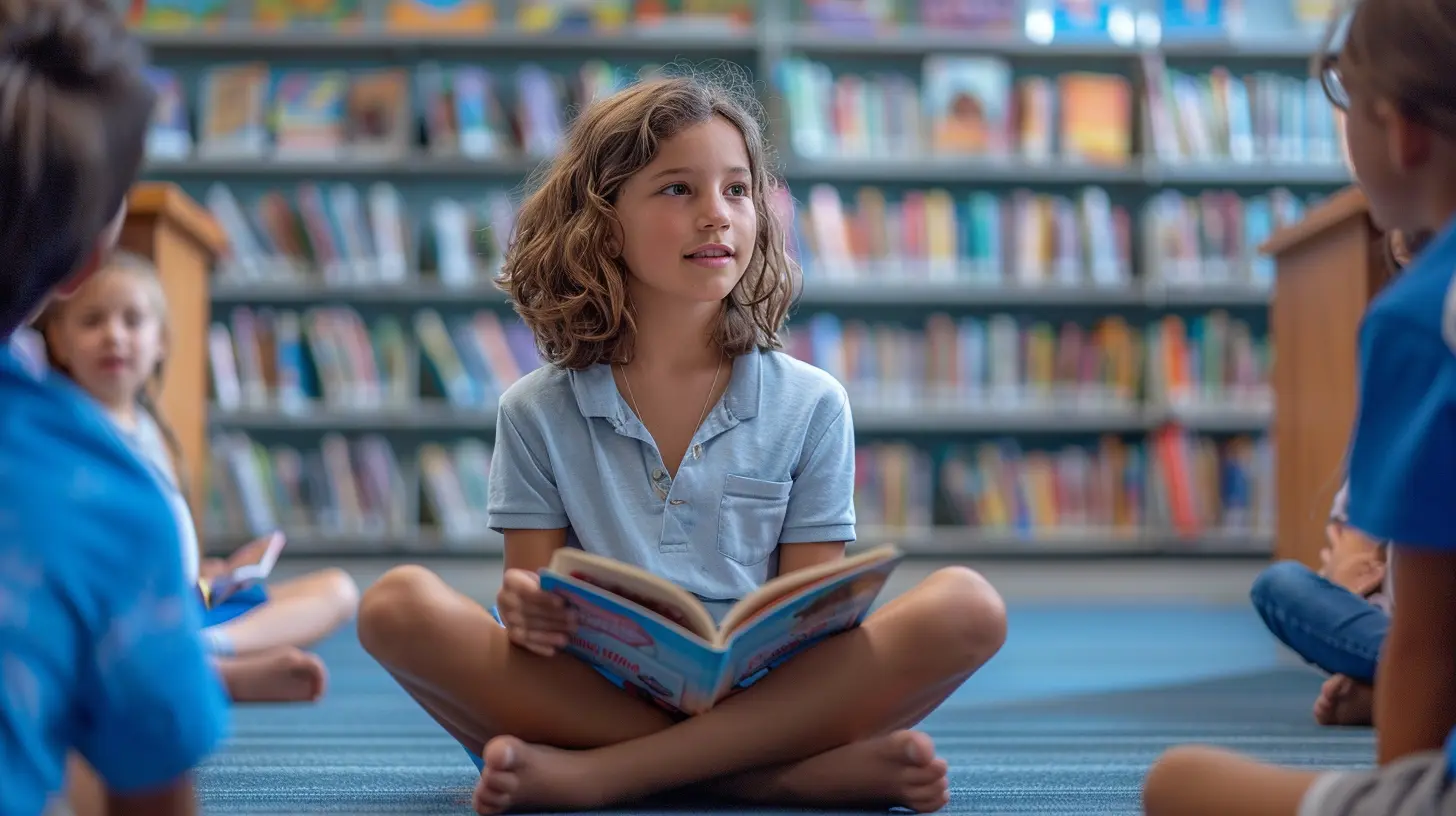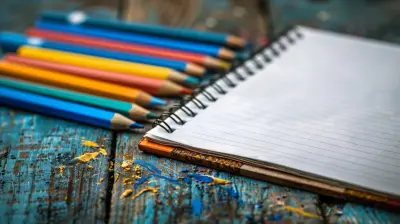How to Use Nonfiction Texts to Build Strong Comprehension Foundations
12 September 2025
When it comes to reading, fiction often steals the spotlight. We love a good story, right? But here's the thing — nonfiction is just as powerful, especially when you're trying to lay down the groundwork for solid reading comprehension.
Think of reading comprehension like building a house. Fiction might give you the paint and interior design, but nonfiction? That’s your foundation. It’s the bricks and mortar every reader needs to build deep understanding and lifelong literacy skills.
In this article, we're diving into how to use nonfiction texts to build those strong comprehension foundations step-by-step. Whether you're a parent, teacher, or a student yourself, you'll pick up practical strategies to boost comprehension skills the smart way.

Why Nonfiction Matters More Than You Think
Let’s start with the big question: Why bother with nonfiction?Nonfiction introduces real-world concepts. It teaches kids to extract facts, evaluate evidence, identify main ideas, and distinguish opinions from truths — essential skills for academic success and navigating the world.
Imagine trying to assemble IKEA furniture without being able to follow instructions. That's what life feels like without nonfiction comprehension! You miss the details, the logic, the big picture.
In school and beyond, nonfiction is everywhere — science, history, newspapers, online articles, how-to guides, you name it. The better students are at understanding these texts, the more empowered they become.

The Key Elements of Nonfiction Reading
Before we jump into strategies, let’s break down what makes nonfiction different from fiction. Understanding these elements helps students approach nonfiction reading with the right mindset.1. Text Features
Nonfiction texts are packed with helpful clues:- Headings and subheadings to organize ideas
- Bolded or italicized words that show importance
- Captions explaining images
- Graphs, charts, and diagrams to visualize data
- Glossary and index for quick reference
Teach students to treat these like treasure maps. They’re hints to what’s important and where to find it.
2. Text Structures
Unlike a story plot, nonfiction texts often follow certain structures:- Cause and effect
- Compare and contrast
- Problem and solution
- Sequence/chronology
- Description
If students can recognize these patterns, they’ll follow the author’s train of thought much more easily.
3. Purpose and Point of View
Why was this text written? What does the author want us to know or do? Nonfiction is all about informing, explaining, or persuading — and comprehension skyrockets when students can spot the motivation behind the words.
How to Introduce Nonfiction Texts Effectively
Alright, we know nonfiction is important. But how do we actually get students into it — and loving it?1. Pick High-Interest Topics
Let’s not kid ourselves. No one wants to read a dry article about the agricultural export of soybeans (unless you're really into soybeans, of course).Find topics that spark curiosity:
- Dinosaurs? Always a hit.
- Space exploration? Yes, please.
- Weird animal facts? Count us in.
When kids care about what they’re reading, the comprehension builds naturally.
2. Start Small, Go Big
You don’t need to throw a full research paper at a 3rd grader. Start with small chunks. Think:- Infographics
- One-page articles
- Magazine clips
- Simple biographies
Gradually build up to denser materials as confidence grows.
3. Use Think-Alouds During Reading
As a teacher or parent, read aloud and model your thought process:- “Hmm, this heading says ‘Causes of Volcanoes’... I bet this paragraph will explain why they erupt.”
- “I see a chart here. Let’s figure out what it's showing.”
This is like showing your work in math class — but for reading. It shows kids how good readers think.

Strategies to Boost Nonfiction Comprehension
Now we’re getting into the good stuff. Let’s talk about actionable steps you can use to supercharge comprehension.1. Pre-Reading Strategy: Preview and Predict
Before diving in, skim through the text:- Look at headings, images, and bolded words.
- Ask: “What do I think this text is about?”
- Predict what you’ll learn.
This gets the brain ready and sets a purpose for reading.
2. During Reading: Stop and Check
Reading isn’t a race. Encourage students to pause and reflect:- What did I just read?
- Does it make sense?
- Can I summarize it in one sentence?
Use sticky notes to jot down questions or confusing parts. It’s like leaving breadcrumbs for your brain.
3. Use Graphic Organizers
Organizers turn abstract thinking into something visual. Some easy ones:- Venn diagrams (for compare/contrast)
- Flowcharts (for sequence)
- Cause and effect maps
They’re like roadmaps for understanding — and kids love drawing them.
4. Teach Keyword Highlighting
Encourage highlighting or underlining key words and phrases — but teach them to be selective. Not everything needs a neon marker!Focus on:
- Main ideas
- Definitions
- Dates and names
- Cause/effect phrases
5. Build Vocabulary the Smart Way
Nonfiction texts often come with tricky words. You don’t need to memorize them all — focus on context clues:- Definitions within the text
- Examples following the word
- Word parts (prefixes, roots, suffixes)
Turn it into a game: “What do YOU think this word means?”
6. Ask Deep Questions
Go beyond yes/no:- What’s the main idea here?
- What’s the author trying to tell us?
- How can I connect this to something I already know?
These open-ended questions pull students into the text and make it personal.
7. Summarize and Retell
After reading, have students sum up the text in their own words. Not just robot-style summary — get creative:- Sketch it out
- Make a mini-presentation
- Talk it out with a partner
If you can teach it, you understand it.
Making Nonfiction Comprehension Part of Daily Life
Want to make nonfiction comprehension second nature? Integrate it into everyday routines.Morning News Routine
Start the day with a short news article for kids. Read it together, talk about key points, and ask questions. It builds awareness and habits at the same time.Pair Fiction with Nonfiction
Reading a novel about firefighters? Pair it with a nonfiction article on fire safety or firefighting history. This gives context and shows how different types of texts can complement each other.Research Projects
Even mini research assignments (like “3 facts about sea turtles”) can reinforce comprehension. Just make sure students explain how they found their info — that’s where the real thinking happens.Family Involvement
Encourage kids to read nonfiction with family members. Recipes, how-to guides, instruction manuals — all of it counts! It shows that comprehension is useful beyond the classroom.
Common Challenges — and How to Tackle Them
Let’s be real — nonfiction can be tough. Here are some bumps in the road and how to smooth them out.Challenge 1: Students Feel Overwhelmed
Nonfiction can look dense and intimidating. Break it up:- Use chunking strategies
- Focus on one section per day
- Use graphic aids (charts, pictures) to lighten the load
Challenge 2: Lack of Background Knowledge
If a student’s never heard of the Amazon rainforest, reading about it might be like decoding ancient hieroglyphs. Build that background:- Watch a quick video first
- Show visuals
- Relate it to something they already know
Challenge 3: Passive Reading
Some kids read like they’re scanning a barcode. No reflection, no engagement.Push for active reading:
- Ask frequent questions
- Use sticky notes
- Have students make predictions or personal connections
Final Thoughts: Nonfiction Is the Real Deal
Here’s the bottom line — nonfiction isn't just for textbooks or tests. It builds the core skills every student needs in school and life. Whether you're explaining the water cycle or reading about astronauts, nonfiction anchors understanding in reality.By teaching students not just to read nonfiction, but to engage with it, think about it, and use it, you're helping them become powerful learners and thinkers.
And hey — that’s one foundation worth building.
all images in this post were generated using AI tools
Category:
Reading ComprehensionAuthor:

Anita Harmon
Discussion
rate this article
1 comments
Mara Williams
Nonfiction texts: like treasure maps for the brain! Dig deep, uncover facts, and watch comprehension bloom like a quirky garden!
October 4, 2025 at 4:45 AM

Anita Harmon
Absolutely! Nonfiction texts are indeed invaluable tools for exploration, guiding readers to discover knowledge and fostering comprehension growth in vibrant ways. Happy reading!


